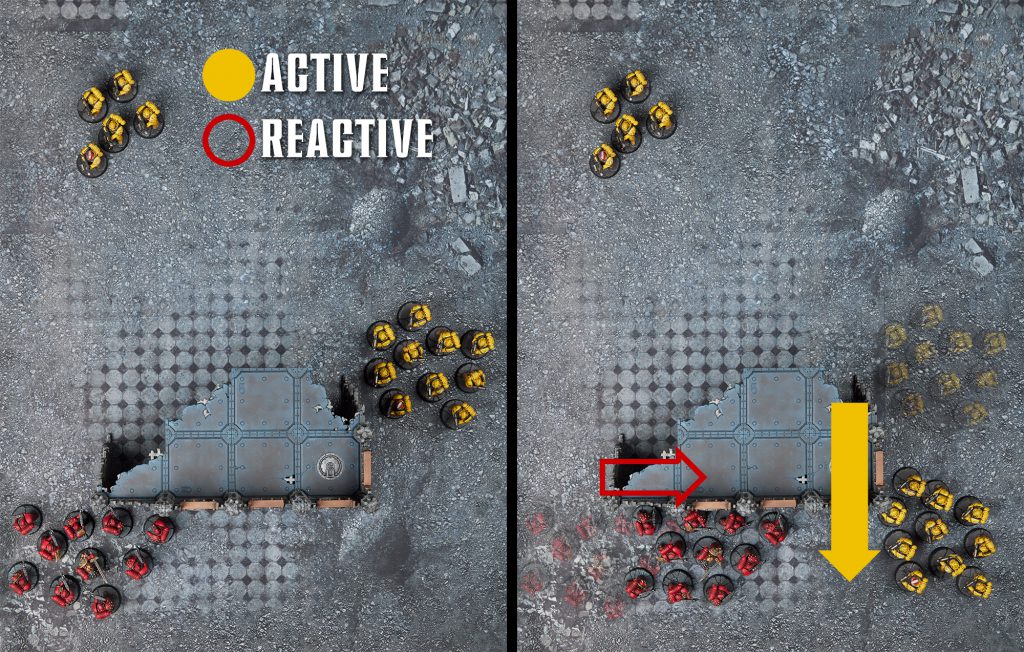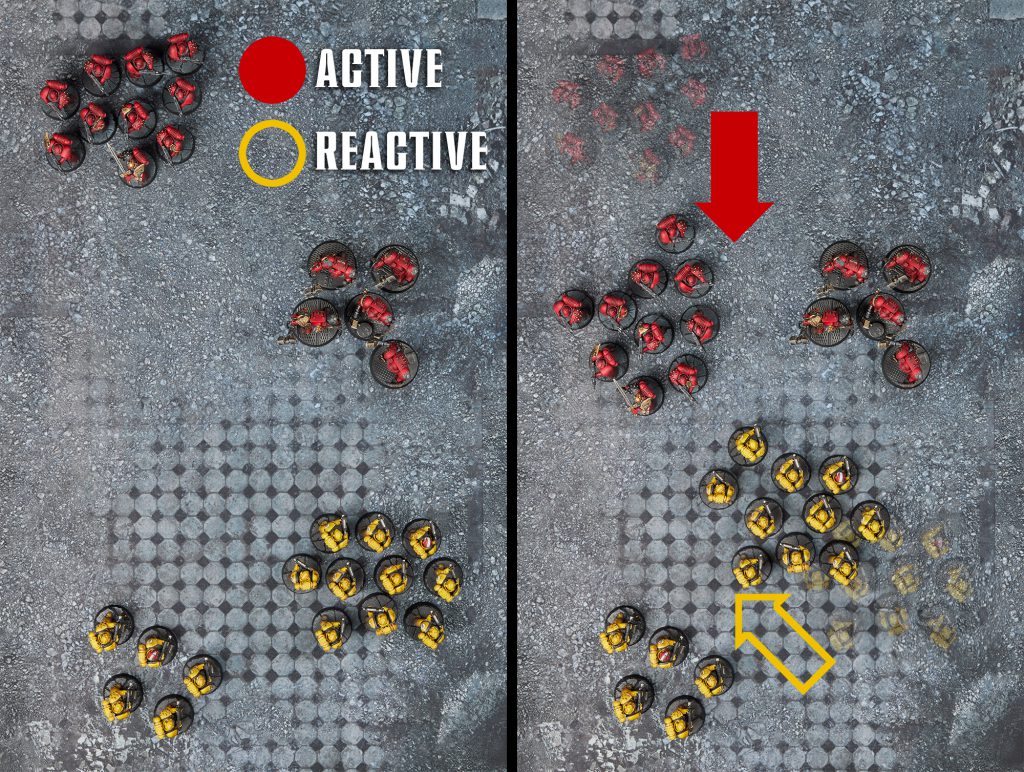Welcome to Horus Heresy Tactica, our series that provides a deep dive in a specific mechanic, interaction or aspect of play in Warhammer: the Horus Heresy.
One of the major features of the second edition of Warhammer: the Horus Heresy is Reactions. These are special actions that can be performed by units in your opponent’s turn in reaction to things that they do. They’re one of the most important things to master when you start playing the game because they have an enormous impact on the course of battles and working out how to use them and when is an essential tactical skill. Today we’re going to be focusing on the Core Reactions, available to all units and covering the majority of reactions you’ll be using.
Using reactions
By default you can use one reaction in each phase of your opponent’s turn, but that’s only part of the story. One of the major benefits of a warlord trait is to provide additional reactions. Other than a couple of exceptions this is always a single additional reaction in a specific phase. There are some exceptions, especially among the primarchs – you might find you have more flexibility in when you get that additional reaction, or you might even get one in more than one phase. Every additional reaction is a hugely valuable resource but which phase you want to focus on varies greatly depending on what your army is looking to do.
Regardless of any bonuses to your allotment you can only use at most three reactions in any one phase, unless a special rule specifically says otherwise (like Augury Scanners do). In addition a unit cannot use more than one reaction in a phase basically with no exceptions, and units cannot react if they’re pinned, falling back, locked in combat or under the effects of a special rule that says they can’t. This means that pinning a unit before charging is an exceptionally effective tactic. Also, be aware that Fearless units can’t use certain reactions (specifically Evade from the core reactions).
Before we get into the meat of the different reactions and how to use them, let’s address up front that there are some issues in the rules as currently expressed as to exactly when they are used and how. We’re expecting this to be cleared up in the near future in the first FAQ, but suffice to say that at current shooting reactions seem to assume that the shooting attack process resolves all saves and damage mitigation at once, while the actual process very explicitly resolves them one at a time, as wounds are allocated to models from the wound pool. This means that, read as written, shooting reactions are triggered between the first model making a save and making a damage mitigation roll or being removed as a casualty, which is… Weird. There’s no easy resolution to this unfortunately, but for ease of play we recommend declaring the reaction when the shooting attack is made and then applying it in sequence (so you declare a unit will Evade when your opponent targets them, and then they just get the damage mitigation from shrouded as the normal part of resolution, for example). This isn’t quite as written, but it’s a hell of a lot simpler and fingers crossed soon enough a FAQ will drop and I can come back and just delete this whole paragraph.
Movement reactions
At first glance movement reactions can seem the least impactful of the reactions – after all both shooting and assault reactions actually let you do a full unit’s shooting, which is a huge deal. And while the Movement reactions are more subtle, they’re possibly the most impactful on the game as a whole. Remember that Horus Heresy is a game where manoeuvre is king – getting your units to the right place at the right time is enormously important.
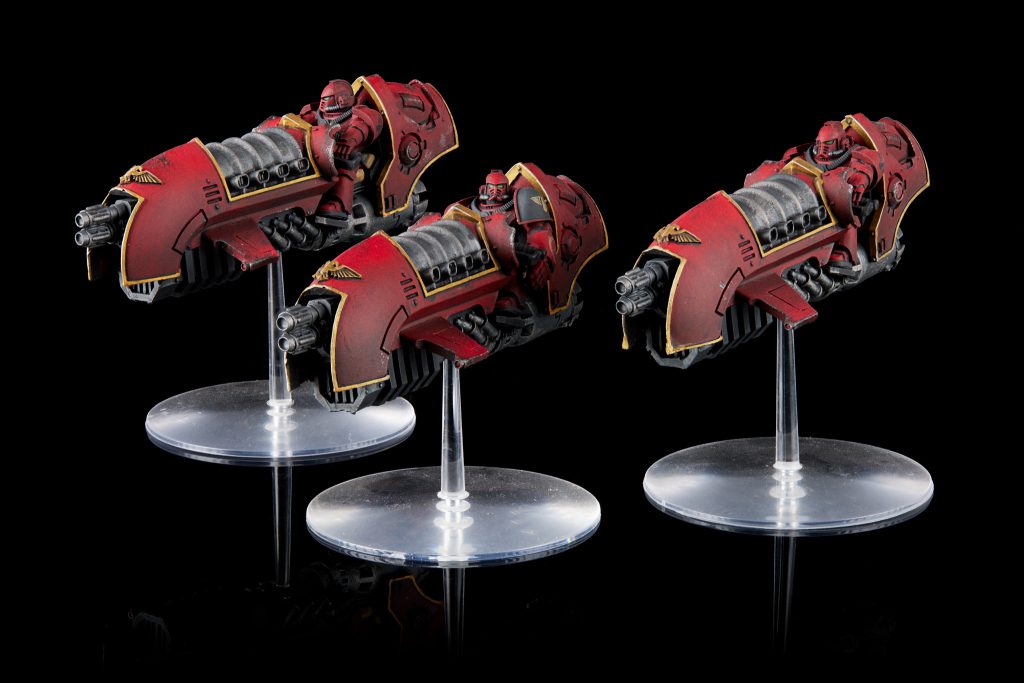
The two reactions (Advance and Withdraw) are pretty much identical except one is towards an enemy unit triggering it and one is away. Both are triggered by an enemy unit ending a move within 12″ of a unit and within line of sight. Units must move directly towards the unit up to a number of inches equal to their unmodified Initiative (with some subtypes and special rules specifically modifying this distance, especially Heavy). For most marine units this is 4″. Vehicles instead get a 90° pivot and then a 6″ move, but they must obey the “directly towards” clause too, so it’s definitely possible for vehicles to be unable to perform this reaction (if you approach them from the rear).
Advance is useful to do one of the following:
- advance towards a unit so you are in range to return fire with maximal effect (for example with a melta weapon or in rapid fire range)
- advance into a position that provides cover or blocks line of sight for other enemy units that may want to shoot your unit

Using the Advance reaction to move out of line of sight - to block or intercept a charge intended for another unit

Using the Advance reaction to block a charge
This second option requires some explanation. Because the unit that reacts does not need to be the closest unit to the triggering unit, you can use advance to move another unit in front of a vulnerable one. This is especially effective if an opponent is moving multiple units up to charge, as you can advance a unit towards a triggering unit where the path of this advance takes you directly between another unit that is moving up to charge and their intended target.
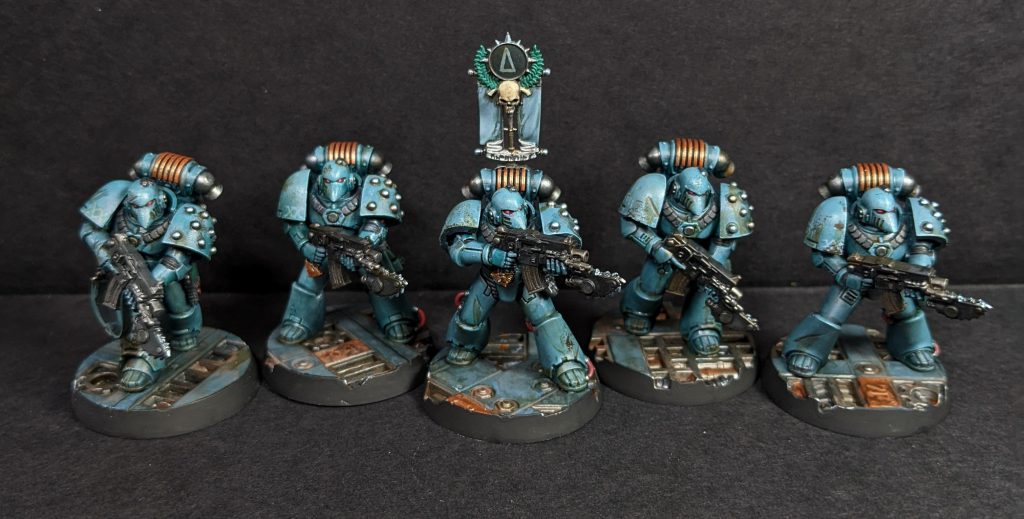
Withdraw is a little simpler, and is useful for the following:
- to withdraw into cover or out of line of sight of other units that want to shoot them
- to withdraw out of maximally effective range of an enemy’s shooting
- to put more distance between you and an advancing unit that is likely to charge you
When you advance or withdraw always be sure to be aware of where your new position places you in relation to all enemy units, not just the one that triggered the reaction. A common mistake for new players is to react in a way that may be better in relation to the triggering unit, but is far worse overall.
You should prioritise Movement reactions if your army:
- relies on speed and positioning
- you have a lot of units that get much better when you are at specific ranges
- you have a lot of assault-focused units that you want to get up close as soon as possible
- you have a lot of units vulnerable to assaults that you want to keep as far away from the enemy as possible
Shooting reactions
Shooting reactions have the opportunity to massively swing the battle, and they often become a game of cat and mouse between two canny opponents. The choice of when to fire at a unit when your opponent still has a shooting reaction in reserve, and when to deplete your shooting reaction allocation knowing that it means that your opponent can then fire with impunity, is a difficult one.
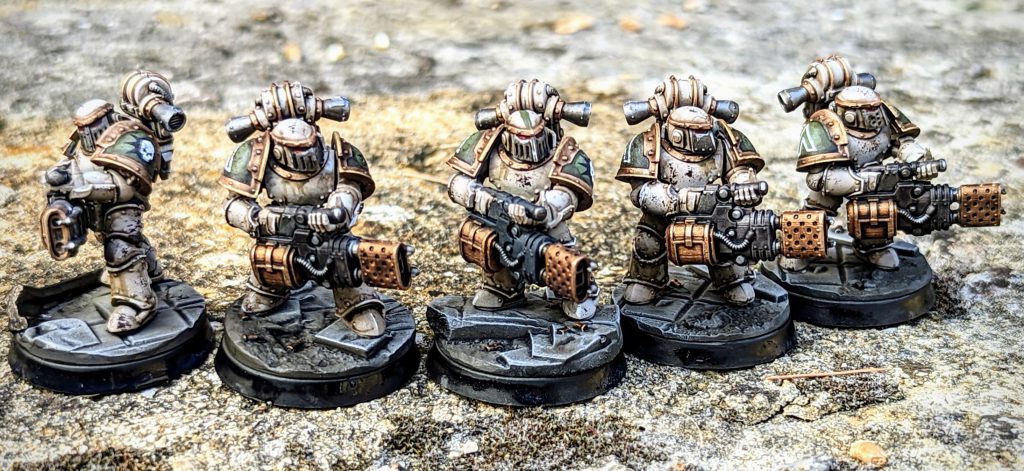
Return Fire allows a unit to make a Shooting Attack against the unit that triggered the reaction, and as of the latest FAQ this is before the attacking unit gets to make their own attack. This is a huge deal, and it makes targeting powerful shooting units extremely risky while that reaction allocation is still unspent. You want to use this for maximal effect where possible, unleashing a volley of fire against the right kind of target for your weapon at the optimal range. There’s a certain amount of pushing your luck though, because if you wait too long you may find that you have missed the best opportunity for this reaction in the phase, and you either don’t end up spending the reaction at all or you spend it less effectively than you could have. Consider at each possible opportunity to react with Return Fire:
- What is left to shoot? What might be a better target for this reaction?
- How effective is the shooting this unit would do likely to be? Is this a good target for their weapons and will they do meaningful damage to their enemy?
- Will my unit be effective after this shooting phase and so this is their last opportunity to make back their points?
One note is that you are considered stationary for the purposes of returning fire, so you make full shots with heavy weapons and so on. However you do not get Fury of the Legion unless this unit also didn’t move in their previous turn (because it specifies that you did not move or Run in “the Movement phase of its controlling player’s turn, but does not specify that it only applies in the Shooting phase).
Also remember that now this reaction takes place before the initial shooting, despite the name of the Reaction, yes it’s silly, and so if you can Pin the enemy unit they will be firing on Snap Shots. It’s a little unclear exactly what happens in regards to if models shooting that are removed as casualties by Return Fire still get to shoot (probably not as the dice pool is assembled at Step 4 after the reaction) but for sure models firing a different weapon afterwards that are removed don’t get to shoot. This makes sniper fire in reaction very scary, and also makes vehicles astonishingly vulnerable to return fire.
Be aware as well that many Psychic powers replace a Shooting Attack, which this absolutely counts as. Therefore consider if you can use a psychic power in a reaction – this is especially good with Biomancy, for example. Or to more or less ensure pinning with Telepathy.
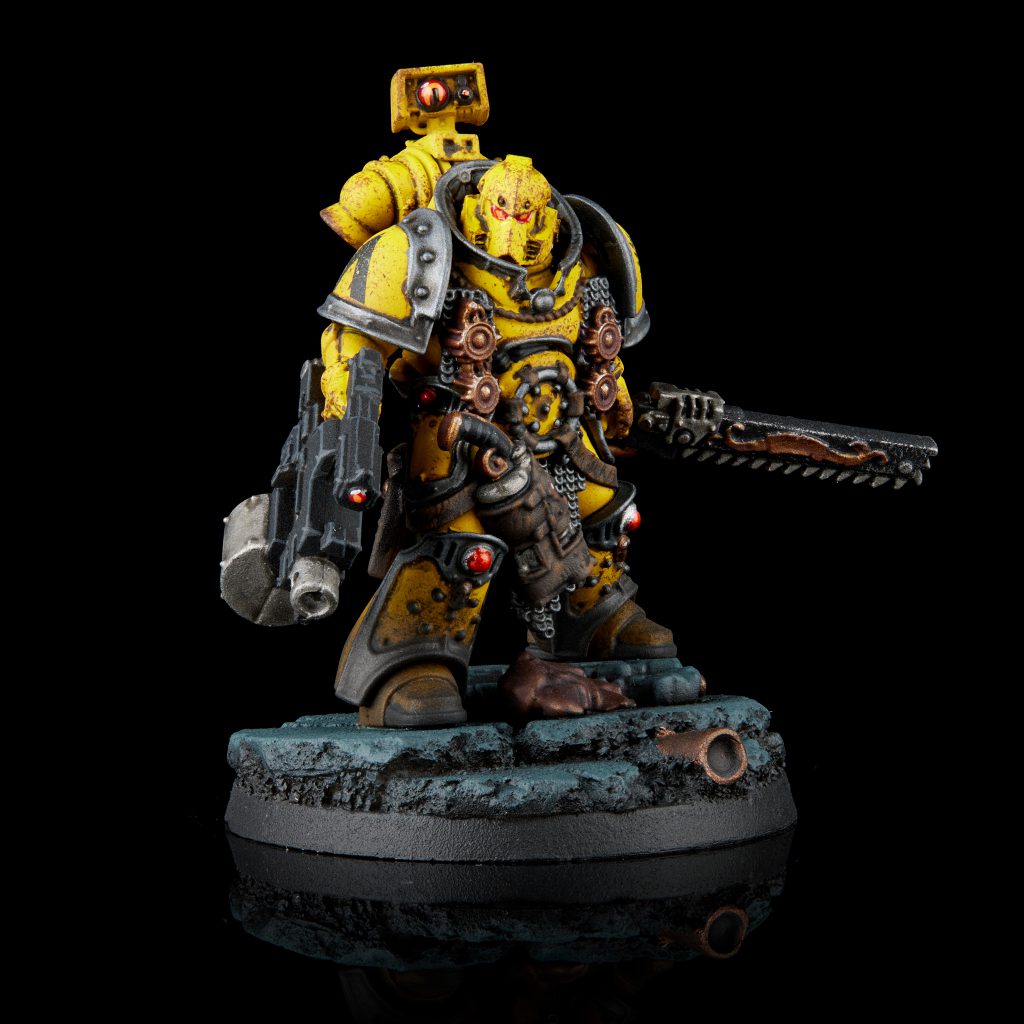
Evade is the defensive option – it grants Shrouded (5+). This is a very simple calculus on use really: is the unit targeted one you really need to preserve, which cannot be better used to Return Fire, and which doesn’t already have as good or better a Damage Mitigation roll? If so then you should use Evade, if not then don’t. This does mean that it’s basically never worth using this Reaction on a unit with an apothecary. Also remember that Fearless units can’t use this reaction.
One thing we’ve not discussed in these reaction is Vehicles, because it gets complicated. Vehicles can only fire defensive weapons in Return Fire, which makes it pretty unlikely to be worth doing, so only do that if there are no other options (or the vehicle happens to be one covered in defensive weapons). And as of the most recent FAQ shrouded applies to vehicles properly so this works well.
You should prioritise Shooting reactions if your army:
- has excellent shooting potential, especially in its infantry, that can cause enormous damage to the enemy
- is very vulnerable to shooting and needs protection as it moves upfield
Assault reactions
Probably the most niche of the reactions, they are the most likely kind of reaction you will not spend your full allocation on every turn. However, when they are used they can be absolutely essential to your victory, and they’re also the only kind of reaction able to shut down enemy action entirely. Both are triggered when the enemy declares a Charge, and resolved after the charge distance rolls but before the models are moved.
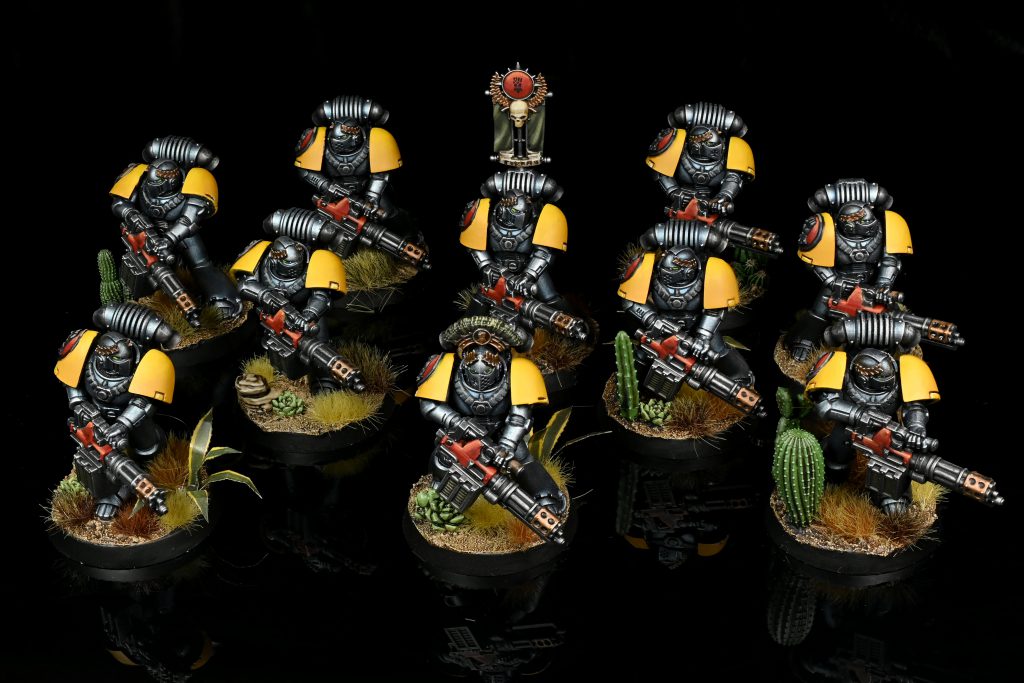
Overwatch is the more aggressive of the two, allowing you to make a Shooting Attack with the unit at the enemy unit that triggered the Reaction. This can soften up a unit before it hits combat, but more likely you’re using this because the unit being charged is effective at range but not up close, and therefore it’s important for them to do something before being reduced to a fine paste. Psychic powers are also a common replacement for a Shooting Attack, so also be aware that this is an opportunity to buff the unit before melee begins. This is a common tactic with Biomancy, upping Strength and Toughness for a unit being charged.
Another very key tactic with Overwatch is to inflict Pinning on the charging unit. As per the Pinning special rule, a unit that is pinned during a Charge automatically fails it, turning their movement into Surge movement and keeping you safe. This is extremely effective – consider a Telepathy Librarian for a surefire way of getting this to work, but anything that throws out Pinning has a chance to arrest a charge entirely.
Hold the Line requires the reacting unit (your unit) to make a Morale check, and if that check is successful the enemy charge is Disordered. That means they don’t get their +1 attack for charging, but more importantly it switches off any special rules that require a successful charge. That can dramatically screw over a bunch of units that rely on their special rules, including things like the Golden Keshig. If you have a key unit being charged and it doesn’t have enough guns for it to be worthwhile shooting at the attacker, then Hold the Line is a great alternative – even if there are no special rules to strip away, not granting the +1 attack can really made a huge difference to the outcome of an assault.
There’s an interesting twist to this reaction though – this is a morale check which means if you fail it, you begin to fall back. So if you use this reaction and fail the check, you can end up running away from the enemy. Now, this can actually be an advantage – it might be better to have a unit run away than be destroyed immediately, and if you can put enough distance between you and them they can escape. However, remember they’ll need to regroup and that’s not without cost – plus they might end up running off the table.
You should prioritise Assault reactions if your army:
- plays very defensively
- has lots of extremely powerful shooting units that are vulnerable to assault
- you have lots of units with Pinning that can stop charges in their tracks
In Conclusion
Reactions are an incredibly potent tool, but not every unit makes good use of every reaction. You need to consider carefully when you use your allotment, and also what reaction is most effective in each circumstance. You should also choose your Warlord Trait and other bonuses that grant additional Reactions on the basis of what your army is good at and what it’s going to get most use from.

